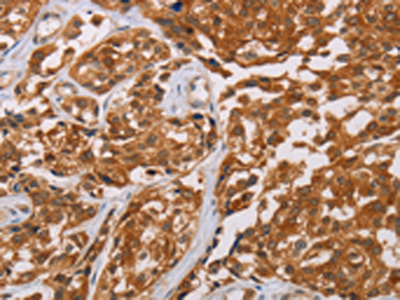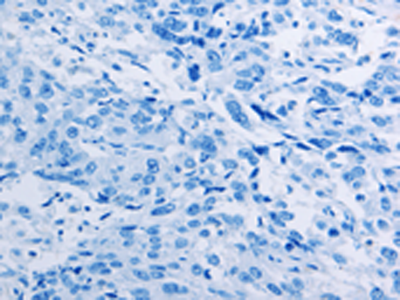| Cat.#: S216986 |
| Product Name: Anti-CRYAB Rabbit Polyclonal Antibody |
| Synonyms: CRYA2; CTPP2; HSPB5; CMD1II |
| UNIPROT ID: P02511 (Gene Accession – BC007008 ) |
| Background: Crystallins are separated into two classes: taxon-specific, or enzyme, and ubiquitous. The latter class constitutes the major proteins of vertebrate eye lens and maintains the transparency and refractive index of the lens. Since lens central fiber cells lose their nuclei during development, these crystallins are made and then retained throughout life, making them extremely stable proteins. Mammalian lens crystallins are divided into alpha, beta, and gamma families; beta and gamma crystallins are also considered as a superfamily. Alpha and beta families are further divided into acidic and basic groups. Seven protein regions exist in crystallins: four homologous motifs, a connecting peptide, and N- and C-terminal extensions. Alpha crystallins are composed of two gene products: alpha-A and alpha-B, for acidic and basic, respectively. Alpha crystallins can be induced by heat shock and are members of the small heat shock protein (sHSP also known as the HSP20) family. They act as molecular chaperones although they do not renature proteins and release them in the fashion of a true chaperone; instead they hold them in large soluble aggregates. Post-translational modifications decrease the ability to chaperone. These heterogeneous aggregates consist of 30-40 subunits; the alpha-A and alpha-B subunits have a 3:1 ratio, respectively. Two additional functions of alpha crystallins are an autokinase activity and participation in the intracellular architecture. Alpha-A and alpha-B gene products are differentially expressed; alpha-A is preferentially restricted to the lens and alpha-B is expressed widely in many tissues and organs. Elevated expression of alpha-B crystallin occurs in many neurological diseases; a missense mutation cosegregated in a family with a desmin-related myopathy. |
| Immunogen: Fusion protein of human CRYAB |
| Applications: ELISA, WB, IHC |
| Recommended Dilutions: IHC: 25-100;WB: 500-2000;ELISA: 2000-5000 |
| Host Species: Rabbit |
| Clonality: Rabbit Polyclonal |
| Isotype: Immunogen-specific rabbit IgG |
| Purification: Antigen affinity purification |
| Species Reactivity: Human, Mouse, Rat |
| Constituents: PBS (without Mg2+ and Ca2+), pH 7.4, 150 mM NaCl, 0.05% Sodium Azide and 40% glycerol |
| Research Areas: Signal Transduction, Cancer, Metabolism, Neuroscience |
| Storage & Shipping: Store at -20°C. Avoid repeated freezing and thawing |

Immunohistochemistry analysis of paraffin embedded Human esophagus cancer tissue using 216986(CRYAB Antibody) at a dilution of 1/20(Cytoplasm). | 
In comparision with the IHC on the left, the same paraffin-embedded Human esophagus cancer tissue is first treated with the fusion protein and then with 216986(Anti-CRYAB Antibody) at dilution 1/20. | 
Gel: 12%SDS-PAGE, Lysate: 40 μg;
Lane 1-3: Mouse heart tissue, human chromaffin cell tumor tissue, mouse muscle tissue;
Primary antibody: 216986(CRYAB Antibody) at dilution 1/500;
Secondary antibody: Goat anti rabbit IgG at 1/8000 dilution;
Exposure time: 1 minute | |
|













